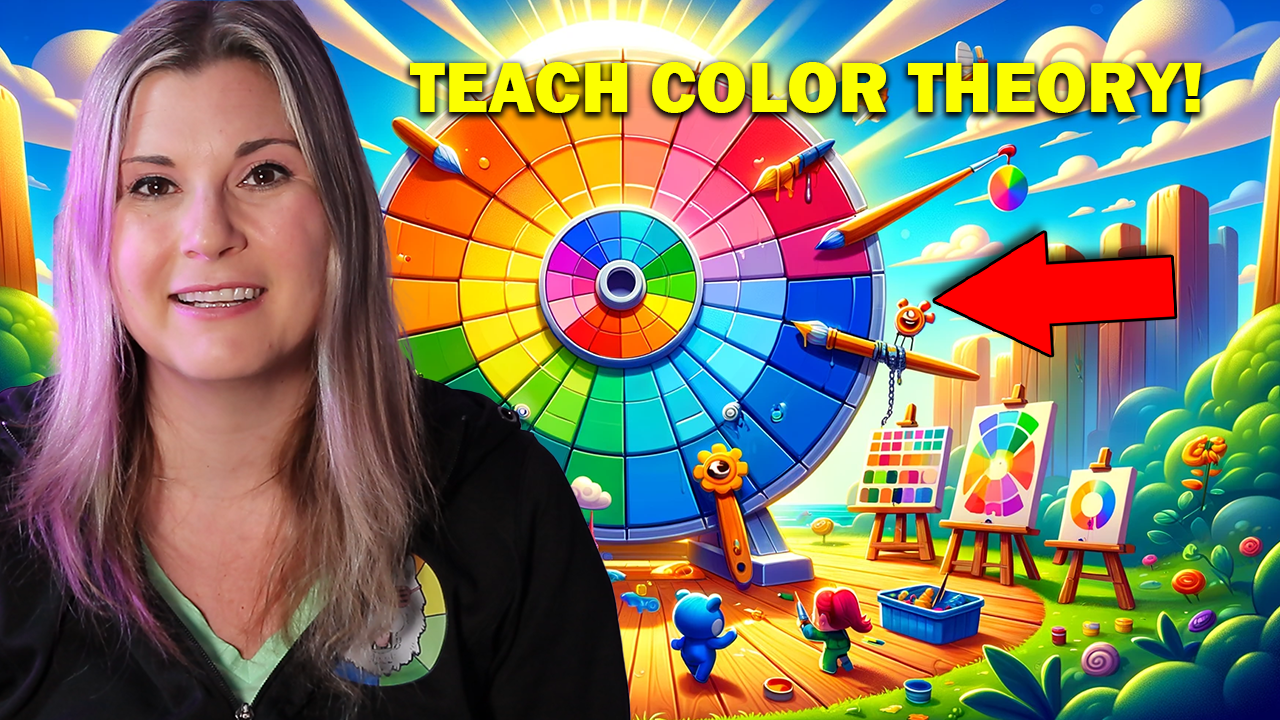Making Secondary Colors:
Teaching secondary colors can be an eye-opening experience for students as they delve into the practical aspects of color theory. Begin with a basic explanation of primary colors and how they blend to form secondary colors. Use engaging visual aids like color wheels and online simulations to illustrate these concepts dynamically, making the learning process both informative and enjoyable.
Provide materials for hands-on activities where students can mix their own secondary colors, using different techniques such as blending colored pencils, mixing paints, or layering translucent papers. This tactile experience is crucial for understanding the subtleties of color mixing, such as how the amount and intensity of each primary color alter the final shade of the secondary color.
Conclude with a creative assignment where students use the secondary colors they've mixed to produce an original piece of art. This could be a painting, a collage, or even a digital artwork, depending on the resources available. This not only allows them to apply what they've learned in a creative context but also encourages them to think critically about color choice and its impact on artistic expression.
Exploring Color Schemes:
Color schemes are fundamental tools for artists, helping to structure color usage within artworks to enhance coherence and expressiveness. Introduce students to the psychological effects of colors and how different schemes can be used to invoke specific emotions. Discuss how colors within the same scheme interact and influence each other, and how artists can use these interactions to guide viewer perception and emotional response.
Assign a project where students experiment with creating mood boards or simple paintings focused on each type of color scheme. This hands-on approach helps students visualize the impact of each scheme and fosters creativity as they explore various combinations. Tools like digital software or mixed media can be used to experiment with ease and flexibility, allowing for quick adjustments and comparisons.
Wrap up the exploration by having students present their projects, discussing what they learned about each color scheme and how it could be applied in different types of art or design fields. This not only reinforces the knowledge gained but also enhances their presentation skills and confidence in discussing artistic concepts. This collaborative review session can be an invaluable part of the learning process, providing insight into diverse artistic interpretations and applications of color theory.
Color Theory Experimentations and Artworks
Implementing color theory in art creation is an effective way to solidify students' understanding and allow them to apply theoretical knowledge creatively. Begin with a set of guided experiments where students mix their own colors to create a personalized color wheel, including tints, shades, and tones. This hands-on mixing activity helps them grasp the subtle nuances between colors and better understand the spectrum they can create with primary and secondary colors.
Next, task students with applying these custom colors in artworks designed to evoke specific emotions or atmospheres. This could be through abstract compositions that focus on color interactions or more figurative works that utilize color to enhance storytelling. Throughout these projects, encourage students to think critically about the choice of color scheme and its effectiveness in communicating a desired message or feeling.
As a culmination of their work, organize a critique session where each student presents their artwork and discusses the rationale behind their color choices, based on their experimental discoveries. This peer review process not only fosters a supportive learning environment but also pushes students to refine their analytical and presentation skills. Finally, compile the best works into a digital gallery or an on-campus display to celebrate the diverse expressions of color knowledge, highlighting the practical application of color theory in art.
Further Resources and Enrollment Announcement - Version 1:




